Adrenal Glands (Function)
1/8
There's no tags or description
Looks like no tags are added yet.
Name | Mastery | Learn | Test | Matching | Spaced |
|---|
No study sessions yet.
9 Terms
What are the adrenal glands?
a pair of endocrine glands that sit just above (superior) the kidneys (Suprarenal gland) and secrete hormones (epinephrine and norepinephrine) that help arouse the body in times of stress.
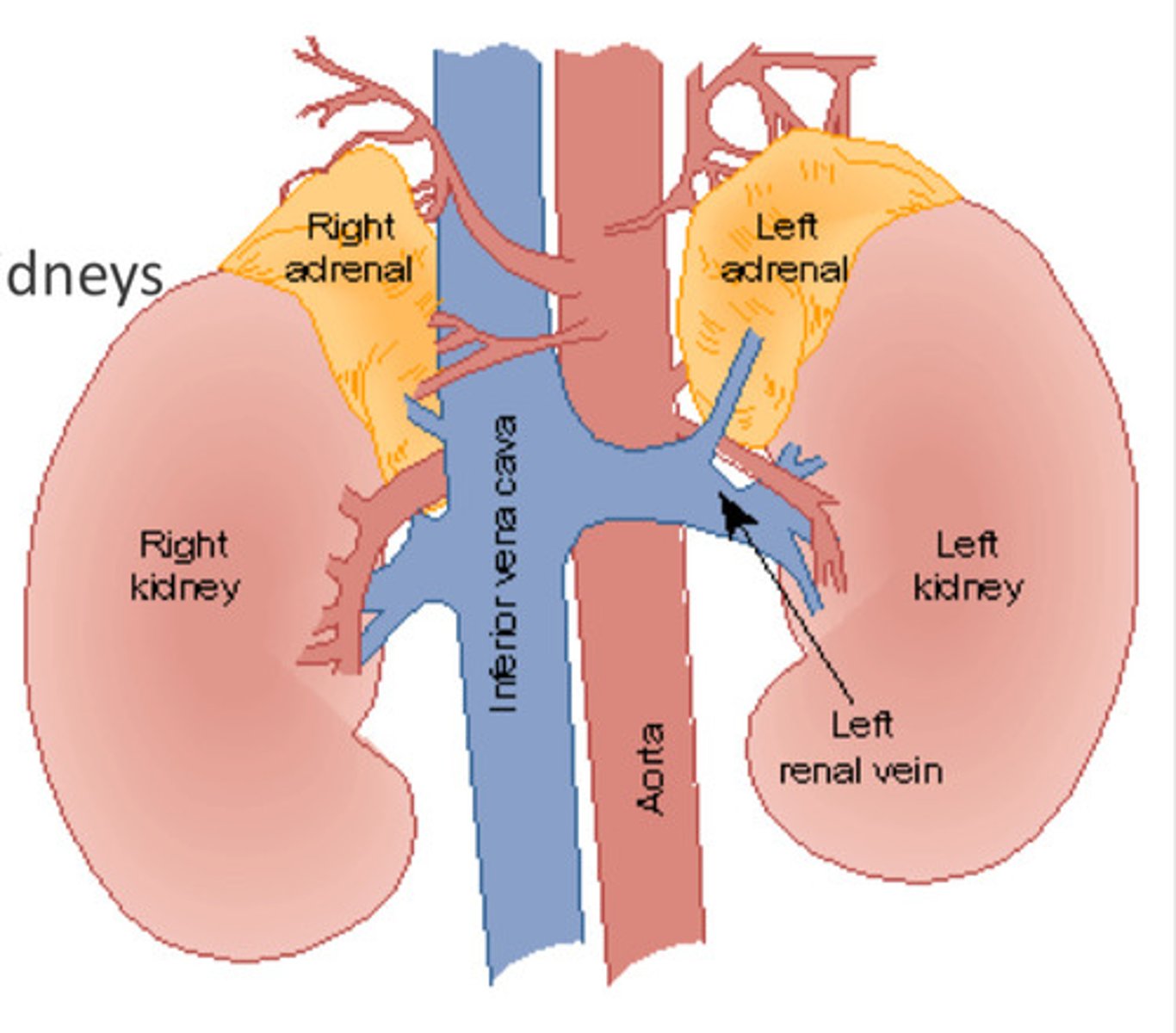
How are hormones secreted through the adrenal glands?
- The adrenal cortex secretes several classes of steroid
hormones (gluco/mineralocorticoids)
- The adrenal medulla is a source of catecholamines
(nor/adrenaline and dopamine): the medulla is an
extension of the sympathetic NS
What are the 3 zones of the adrenal cortex ?
- Divided into 3 zones: zona glomerulosa - responsible for secreting Aldosterone (important for regulating electrolytes for homeostasis) , zona fasciculata - Responsible for secreting corticosteroids (most importantly Glucocorticoids),
zone reticularis - Secretes Androgens
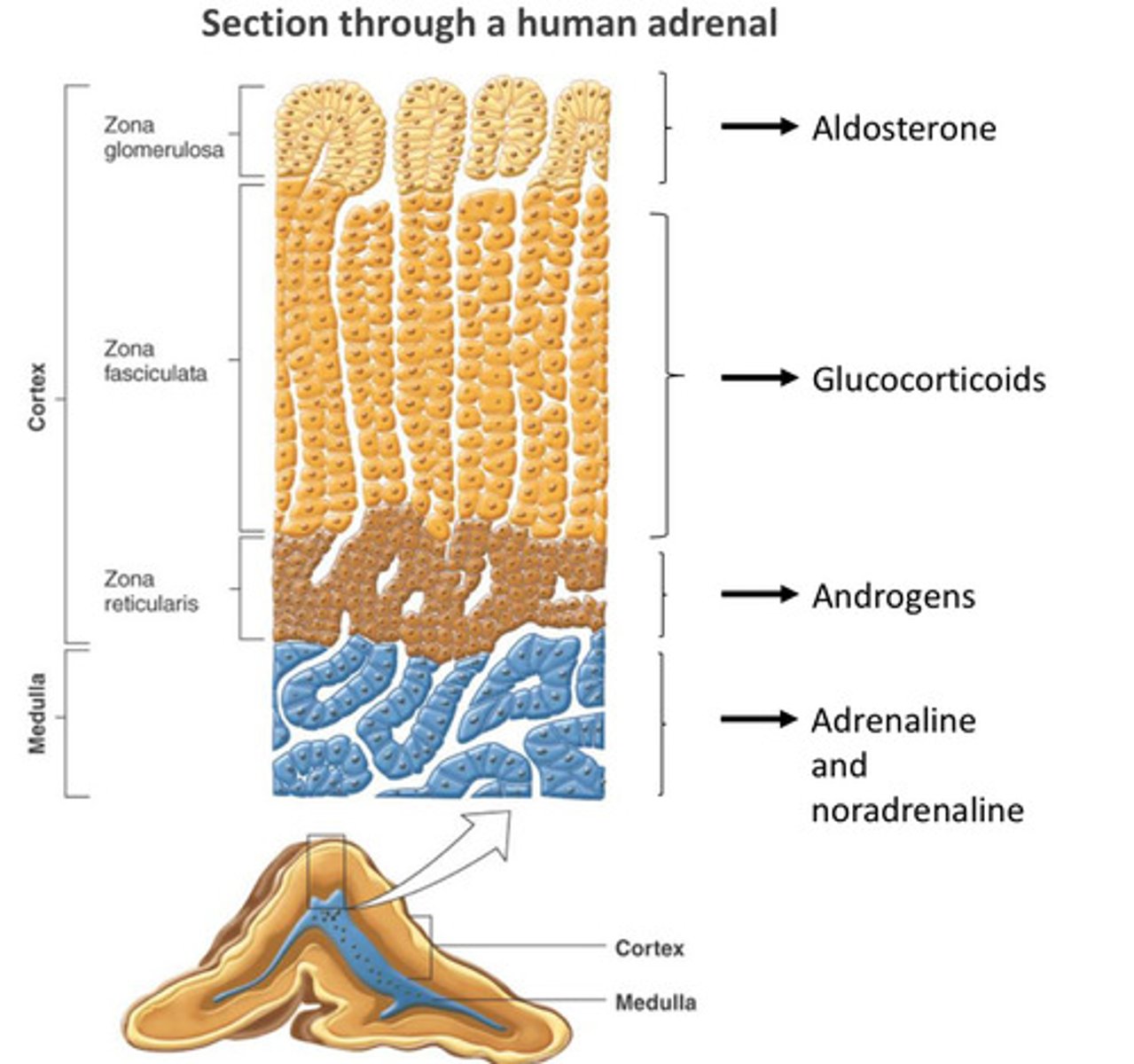
How are steroid hormones synthesised?
All have a common precursor called cholesterol
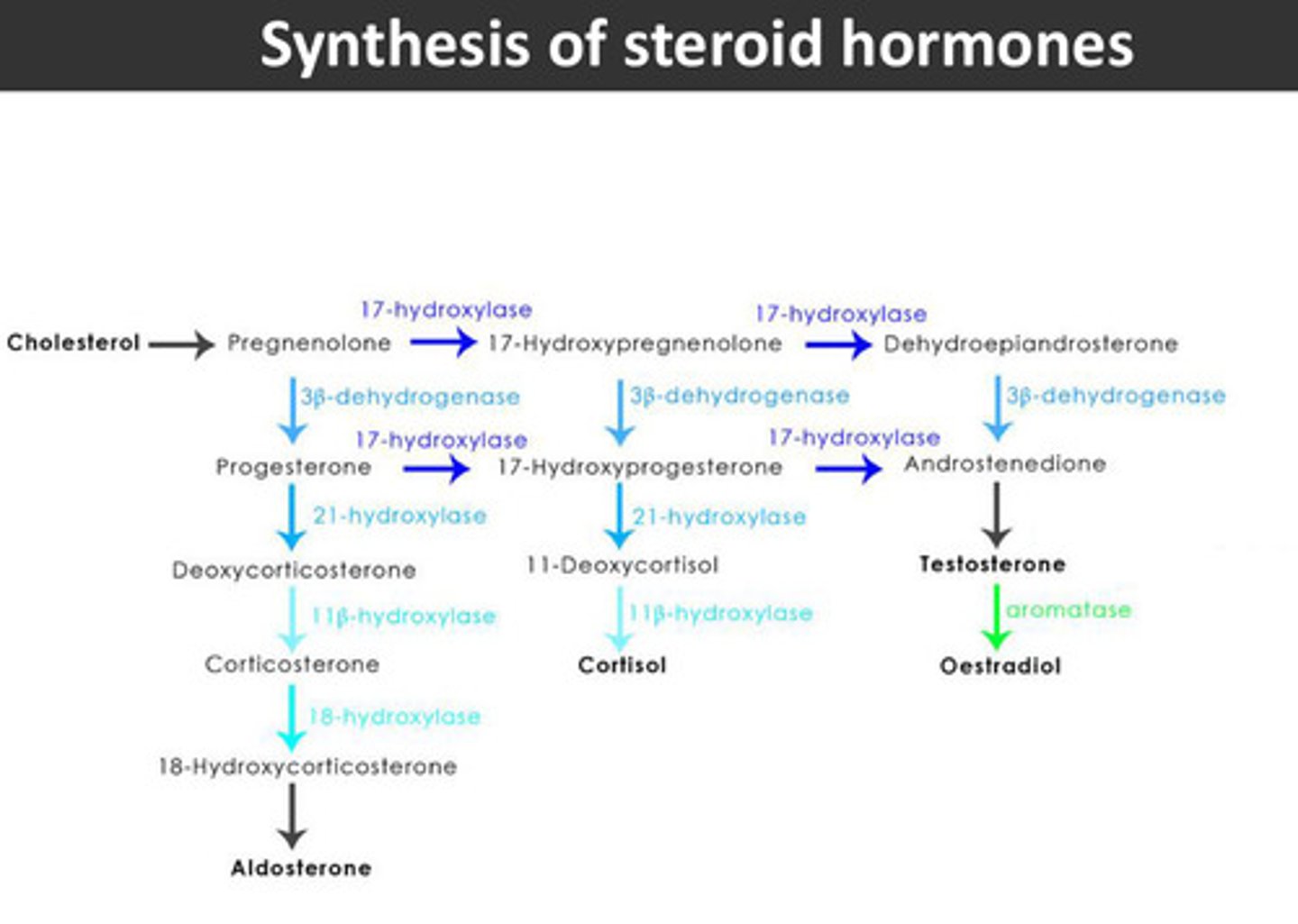
What are the major corticosteroids and their effects?
- Mineralocorticoid e.g., Aldosterone:
- Major role in controlling electrolyte homeostasis- increases sodium
reabsorption and potassium excretion in the kidneys & is regulated by renin-
angiotensin system- therefore increases blood volume and pressure
- Glucocorticoid e.g., Cortisol:
- Major role in response to stress
- Effects on metabolism:
- Increase protein catabolism in muscle, increase gluconeogenesis in
liver, increase plasma glucose and stimulates caloric intake and favours fat
deposition in selected sites, inhibits inflammatory responses by inhibiting
recruitment of neutrophils and release of prostaglandin, suppresses immune
responses including the inhibition of the proliferation of thymus-derived
lymphocytes
- Helps to break down stored energy in response to chronic stress
How Glucocorticoids work:
1) Steroid hormone (cortisol) binds to glucocorticoid hormone receptors located in the cytoplasm. These receptors are associated with Heat Shock Proteins (HSPs - a group of proteins that help cells survive environmental stresses and perform normal functions), originally a Receptor-HSP Complex
2) The binding of the hormone to the receptors releases the HSP = Formation of a hormone-receptor complex
3) This hormone receptor complex then gets access to the nucleus where it binds to the Glucocorticoid Response Element which goes on to regulate the transcription and translation of genes.
- Androgens:
- May be involved in development of secondary sexual characteristics at
puberty
- May have a role in preventing degenerative changes in ageing
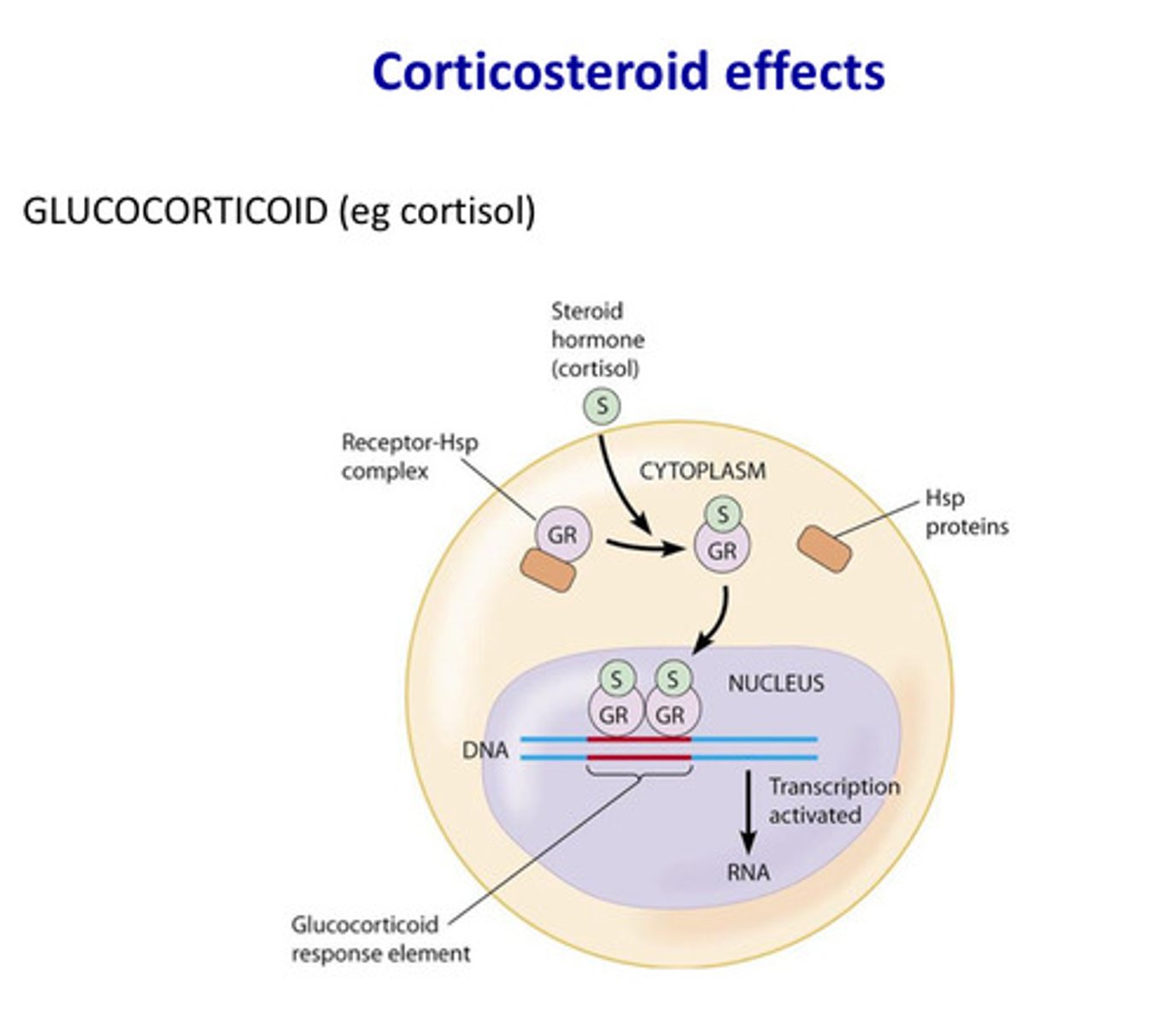
How is adrenocortical function regulated?
- Renin is released by kidney nephrons in response to reduced plasma volume
- Renin then converts angiotensinogen into angiotensin I which is then
converted into angiotensin II in tissues
- Angiotensin II acts on glomerulosa cells to stimulate aldosterone production
- Aldosterone increases sodium reabsorption and so increases plasma volume
as it can control water retention
How is cortisol function regulated?
-In response to chronic stress, the hypothalamus release corticotropin releasing hormone (CRH) to interact with the anterior pituitary hormone to release ACTH (Adrenocorticotropic hormone)
- ACTH is released from anterior pituitary in response to stress
- ACTH binds to receptors in faciculata cells and stimulates cortisol production
- ACTH binds to faciculata and reticularis cells and stimulates cortisol
production
- Cortisol affects metabolism catabolically and is anti-inflammatory
Note: Negative Feedback system
- Cortisol has an inhibitory feedback on the hypothalamus and pituitary
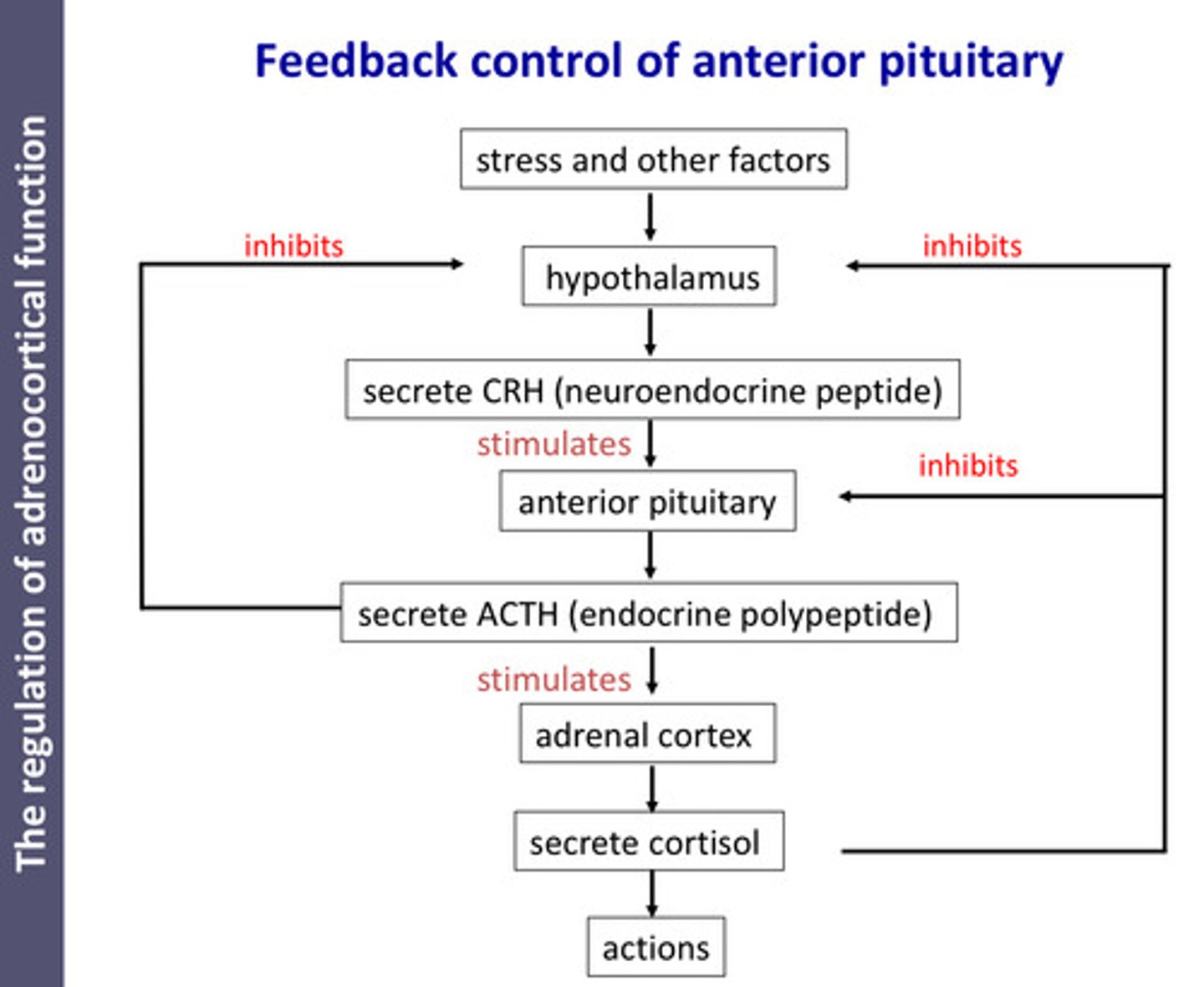
What are adrenal disorders?
- Deficiency: usually fatal is untreated
- e.g. Congenital Adrenal Hyperplasia: enzyme deficiencies = no/little hormones being secreted
- Most serious is no cholesterol = no sexual differentiation
- Others e.g., 11b hydroxylase = salt loss, hypertension, absent/precocious
puberty
- Acquired deficiency: Addison’s (most common) -
- TB or autoimmune destruction = little to no adrenal hormones being produced
-Can't cope with stress due to little to no glucocorticoids
- Severe illness with hypotension (due to lack of aldosterone), fatigue, weakness, anorexia, vomiting,
- Treated with steroid replacement (lifelong!!)
- Overproduction: Cushing’s
- Excess of glucocorticoids caused by tumour in pituitary or adrenal glands or clinical steroid
administration
How is Cushing's characterised?
- Characterised by weight gain (due to it triggering an increased appetite), redistribution of fat to abdomen, face and
posterior neck
- Gluconeogenesis, peripheral insulin resistance and enhanced glucagon
release/suppression of insulin release
- Catabolism (loss in muscle and bone protein, skin thinning)
- Dyslipidaemia: related to direct and indirect effect of cortisol to increase
lipolysis, VLDL synthesis and fatty acid accumulation in liver
- Reduced wound healing and increased bruising